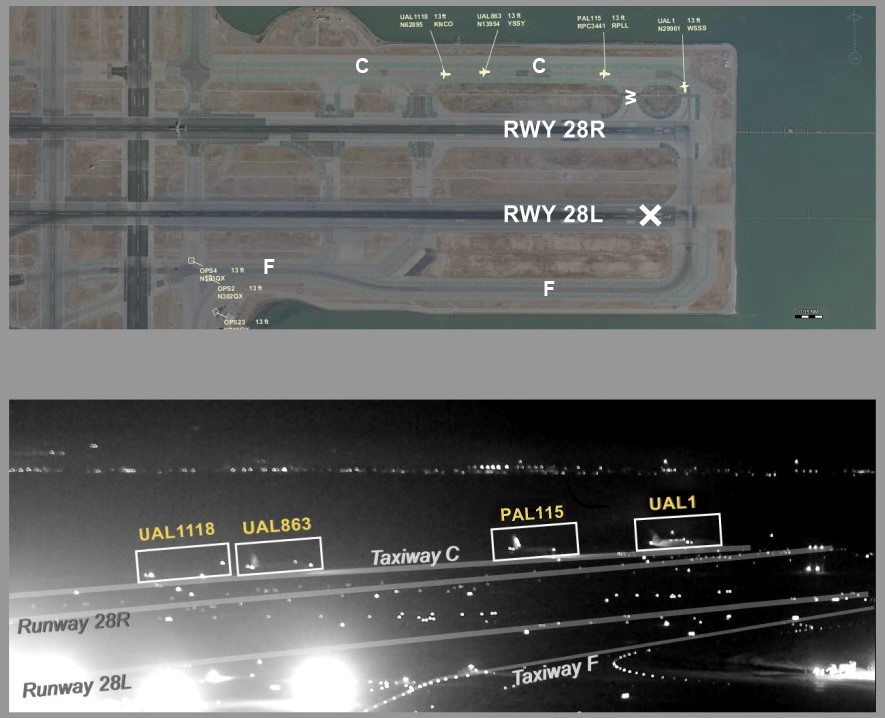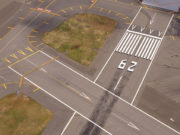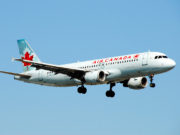
A flight crew’s lack of awareness was to blame for an incident in which they lined up their Air Canada Airbus A320 for landing on an occupied taxiway at San Francisco International Airport (SFO) and descended to about 60 ft above the ground before beginning a go-around, the U.S. National Transportation Safety Board (NTSB) says.
The NTSB determined during a meeting Tuesday that the crew’s lack of awareness was the probable cause of the July 7, 2017, incident in which no one was injured and the A320 was not damaged.
The crew had been cleared to land on Runway 28R but instead lined up with parallel Taxiway C, where four air carrier airplanes were awaiting takeoff clearances. The A320 overflew the first two of those airplanes, reaching a minimum altitude of about 60 ft before beginning to climb, the NTSB said.
The crew’s misidentification of the taxiway resulted from their lack of awareness that Runway 28L was closed “due to their ineffective review of the notice to airmen information before the flight and during the approach briefing,” the NTSB said. “Although the notice to airmen about the Runway 28L closure appeared in the flight release and the aircraft communications addressing and reporting system message provided to the flight crew, the presentation of that information did not effectively convey the importance of the runway closure information and did not promote flight crew review and retention.”
NTSB Chairman Robert Sumwalt added that the mistakes identified in the report point to the need for a review of approach and landing procedures. The event “could very easily have had a catastrophic outcome,” he said.
The NTSB cited fatigue as a contributing factor in the incident, adding that although the pilots’ work schedule was in compliance with Canada’s flight time and rest requirements, “the flight and duty-time and rest requirements for the captain would not have complied with U.S. flight time limitations and rest requirements.”
The investigation of the incident prompted the issuance of six safety recommendations to the U.S. Federal Aviation Administration and one to Transport Canada. The recommendations included a call for airplanes landing at primary airports within some types of controlled airspace to be equipped with “a system that alerts pilots when an airplane is not aligned with a runway surface.” Other recommendations were for development of a method of signaling pilots that a runway is closed and for modifications of airport surface detection equipment systems to detect potential taxiway landings.
The NTSB said the full report on the incident would be available in several weeks on the NTSB website.

